Elagabalus emperor bust Stock Photos and Images
![Portrait of Alexander Severus. Marble, Roman artwork, 222?235 CE. Marcus Aurelius Severus Alexander[1] (1 October 208 ? March 235), also known as Alexander Severus,[2] was Roman emperor from 222 until 235. The last emperor from the Severan dynasty, he succeeded his slain cousin Elagabalus in 222, at the age of 13. Alexander himself was eventually assassinated Stock Photo Portrait of Alexander Severus. Marble, Roman artwork, 222?235 CE. Marcus Aurelius Severus Alexander[1] (1 October 208 ? March 235), also known as Alexander Severus,[2] was Roman emperor from 222 until 235. The last emperor from the Severan dynasty, he succeeded his slain cousin Elagabalus in 222, at the age of 13. Alexander himself was eventually assassinated Stock Photo](https://c8.alamy.com/comp/2YRXPTX/portrait-of-alexander-severus-marble-roman-artwork-222235-ce-marcus-aurelius-severus-alexander-1-1-october-208-march-235-also-known-as-alexander-severus-2-was-roman-emperor-from-222-until-235-the-last-emperor-from-the-severan-dynasty-he-succeeded-his-slain-cousin-elagabalus-in-222-at-the-age-of-13-alexander-himself-was-eventually-assassinated-2YRXPTX.jpg) Portrait of Alexander Severus. Marble, Roman artwork, 222?235 CE. Marcus Aurelius Severus Alexander[1] (1 October 208 ? March 235), also known as Alexander Severus,[2] was Roman emperor from 222 until 235. The last emperor from the Severan dynasty, he succeeded his slain cousin Elagabalus in 222, at the age of 13. Alexander himself was eventually assassinated Stock Photohttps://www.alamy.com/image-license-details/?v=1https://www.alamy.com/portrait-of-alexander-severus-marble-roman-artwork-222235-ce-marcus-aurelius-severus-alexander-1-1-october-208-march-235-also-known-as-alexander-severus-2-was-roman-emperor-from-222-until-235-the-last-emperor-from-the-severan-dynasty-he-succeeded-his-slain-cousin-elagabalus-in-222-at-the-age-of-13-alexander-himself-was-eventually-assassinated-image634299034.html
Portrait of Alexander Severus. Marble, Roman artwork, 222?235 CE. Marcus Aurelius Severus Alexander[1] (1 October 208 ? March 235), also known as Alexander Severus,[2] was Roman emperor from 222 until 235. The last emperor from the Severan dynasty, he succeeded his slain cousin Elagabalus in 222, at the age of 13. Alexander himself was eventually assassinated Stock Photohttps://www.alamy.com/image-license-details/?v=1https://www.alamy.com/portrait-of-alexander-severus-marble-roman-artwork-222235-ce-marcus-aurelius-severus-alexander-1-1-october-208-march-235-also-known-as-alexander-severus-2-was-roman-emperor-from-222-until-235-the-last-emperor-from-the-severan-dynasty-he-succeeded-his-slain-cousin-elagabalus-in-222-at-the-age-of-13-alexander-himself-was-eventually-assassinated-image634299034.htmlRM2YRXPTX–Portrait of Alexander Severus. Marble, Roman artwork, 222?235 CE. Marcus Aurelius Severus Alexander[1] (1 October 208 ? March 235), also known as Alexander Severus,[2] was Roman emperor from 222 until 235. The last emperor from the Severan dynasty, he succeeded his slain cousin Elagabalus in 222, at the age of 13. Alexander himself was eventually assassinated
 This 1884 drawing is of a bust of Elagabalus that is house in the Capitoline museum in Rome. Elagabalus, also known as Heliogabalus, was Roman emperor from 218 to 222. A member of the Severan dynasty, he was Syrian, the second son of Julia Soaemias and Sextus Varius Marcellus. In his early youth he served the god Elagabalus as a priest in Emesa, a city in present-day western Syria. Stock Photohttps://www.alamy.com/image-license-details/?v=1https://www.alamy.com/this-1884-drawing-is-of-a-bust-of-elagabalus-that-is-house-in-the-capitoline-museum-in-rome-elagabalus-also-known-as-heliogabalus-was-roman-emperor-from-218-to-222-a-member-of-the-severan-dynasty-he-was-syrian-the-second-son-of-julia-soaemias-and-sextus-varius-marcellus-in-his-early-youth-he-served-the-god-elagabalus-as-a-priest-in-emesa-a-city-in-present-day-western-syria-image448304724.html
This 1884 drawing is of a bust of Elagabalus that is house in the Capitoline museum in Rome. Elagabalus, also known as Heliogabalus, was Roman emperor from 218 to 222. A member of the Severan dynasty, he was Syrian, the second son of Julia Soaemias and Sextus Varius Marcellus. In his early youth he served the god Elagabalus as a priest in Emesa, a city in present-day western Syria. Stock Photohttps://www.alamy.com/image-license-details/?v=1https://www.alamy.com/this-1884-drawing-is-of-a-bust-of-elagabalus-that-is-house-in-the-capitoline-museum-in-rome-elagabalus-also-known-as-heliogabalus-was-roman-emperor-from-218-to-222-a-member-of-the-severan-dynasty-he-was-syrian-the-second-son-of-julia-soaemias-and-sextus-varius-marcellus-in-his-early-youth-he-served-the-god-elagabalus-as-a-priest-in-emesa-a-city-in-present-day-western-syria-image448304724.htmlRF2H1A170–This 1884 drawing is of a bust of Elagabalus that is house in the Capitoline museum in Rome. Elagabalus, also known as Heliogabalus, was Roman emperor from 218 to 222. A member of the Severan dynasty, he was Syrian, the second son of Julia Soaemias and Sextus Varius Marcellus. In his early youth he served the god Elagabalus as a priest in Emesa, a city in present-day western Syria.
 Rome. Italy. Portrait bust of Roman Emperor Elagabalus (203-222 AD), Capitoline Museum. Musei Capitolini. Stock Photohttps://www.alamy.com/image-license-details/?v=1https://www.alamy.com/stock-photo-rome-italy-portrait-bust-of-roman-emperor-elagabalus-203-222-ad-capitoline-133638153.html
Rome. Italy. Portrait bust of Roman Emperor Elagabalus (203-222 AD), Capitoline Museum. Musei Capitolini. Stock Photohttps://www.alamy.com/image-license-details/?v=1https://www.alamy.com/stock-photo-rome-italy-portrait-bust-of-roman-emperor-elagabalus-203-222-ad-capitoline-133638153.htmlRMHNBMR5–Rome. Italy. Portrait bust of Roman Emperor Elagabalus (203-222 AD), Capitoline Museum. Musei Capitolini.
 This 1897 drawing is of a bust of Elagabalus that is house in the Capitoline museum in Rome. Elagabalus, also known as Heliogabalus, was Roman emperor from 218 to 222. A member of the Severan dynasty, he was Syrian, the second son of Julia Soaemias and Sextus Varius Marcellus. In his early youth he served the god Elagabalus as a priest in Emesa, a city in present-day western Syria. Stock Photohttps://www.alamy.com/image-license-details/?v=1https://www.alamy.com/this-1897-drawing-is-of-a-bust-of-elagabalus-that-is-house-in-the-capitoline-museum-in-rome-elagabalus-also-known-as-heliogabalus-was-roman-emperor-from-218-to-222-a-member-of-the-severan-dynasty-he-was-syrian-the-second-son-of-julia-soaemias-and-sextus-varius-marcellus-in-his-early-youth-he-served-the-god-elagabalus-as-a-priest-in-emesa-a-city-in-present-day-western-syria-image328979229.html
This 1897 drawing is of a bust of Elagabalus that is house in the Capitoline museum in Rome. Elagabalus, also known as Heliogabalus, was Roman emperor from 218 to 222. A member of the Severan dynasty, he was Syrian, the second son of Julia Soaemias and Sextus Varius Marcellus. In his early youth he served the god Elagabalus as a priest in Emesa, a city in present-day western Syria. Stock Photohttps://www.alamy.com/image-license-details/?v=1https://www.alamy.com/this-1897-drawing-is-of-a-bust-of-elagabalus-that-is-house-in-the-capitoline-museum-in-rome-elagabalus-also-known-as-heliogabalus-was-roman-emperor-from-218-to-222-a-member-of-the-severan-dynasty-he-was-syrian-the-second-son-of-julia-soaemias-and-sextus-varius-marcellus-in-his-early-youth-he-served-the-god-elagabalus-as-a-priest-in-emesa-a-city-in-present-day-western-syria-image328979229.htmlRF2A368A5–This 1897 drawing is of a bust of Elagabalus that is house in the Capitoline museum in Rome. Elagabalus, also known as Heliogabalus, was Roman emperor from 218 to 222. A member of the Severan dynasty, he was Syrian, the second son of Julia Soaemias and Sextus Varius Marcellus. In his early youth he served the god Elagabalus as a priest in Emesa, a city in present-day western Syria.
 Ancient marble bust statue of Roman Emperor Elagabalus or Heliogabalus, Capitoline Museum, Italy 1900s Stock Photohttps://www.alamy.com/image-license-details/?v=1https://www.alamy.com/ancient-marble-bust-statue-of-roman-emperor-elagabalus-or-heliogabalus-capitoline-museum-italy-1900s-image555439640.html
Ancient marble bust statue of Roman Emperor Elagabalus or Heliogabalus, Capitoline Museum, Italy 1900s Stock Photohttps://www.alamy.com/image-license-details/?v=1https://www.alamy.com/ancient-marble-bust-statue-of-roman-emperor-elagabalus-or-heliogabalus-capitoline-museum-italy-1900s-image555439640.htmlRF2R7JCX0–Ancient marble bust statue of Roman Emperor Elagabalus or Heliogabalus, Capitoline Museum, Italy 1900s
 Elagabalus (ca.203-222). Roman emperor. Bust. Marble. Unknown artist. National Gallery. Oslo. Norway. Stock Photohttps://www.alamy.com/image-license-details/?v=1https://www.alamy.com/stock-photo-elagabalus-ca203-222-roman-emperor-bust-marble-unknown-artist-national-171218333.html
Elagabalus (ca.203-222). Roman emperor. Bust. Marble. Unknown artist. National Gallery. Oslo. Norway. Stock Photohttps://www.alamy.com/image-license-details/?v=1https://www.alamy.com/stock-photo-elagabalus-ca203-222-roman-emperor-bust-marble-unknown-artist-national-171218333.htmlRMKXFJMD–Elagabalus (ca.203-222). Roman emperor. Bust. Marble. Unknown artist. National Gallery. Oslo. Norway.
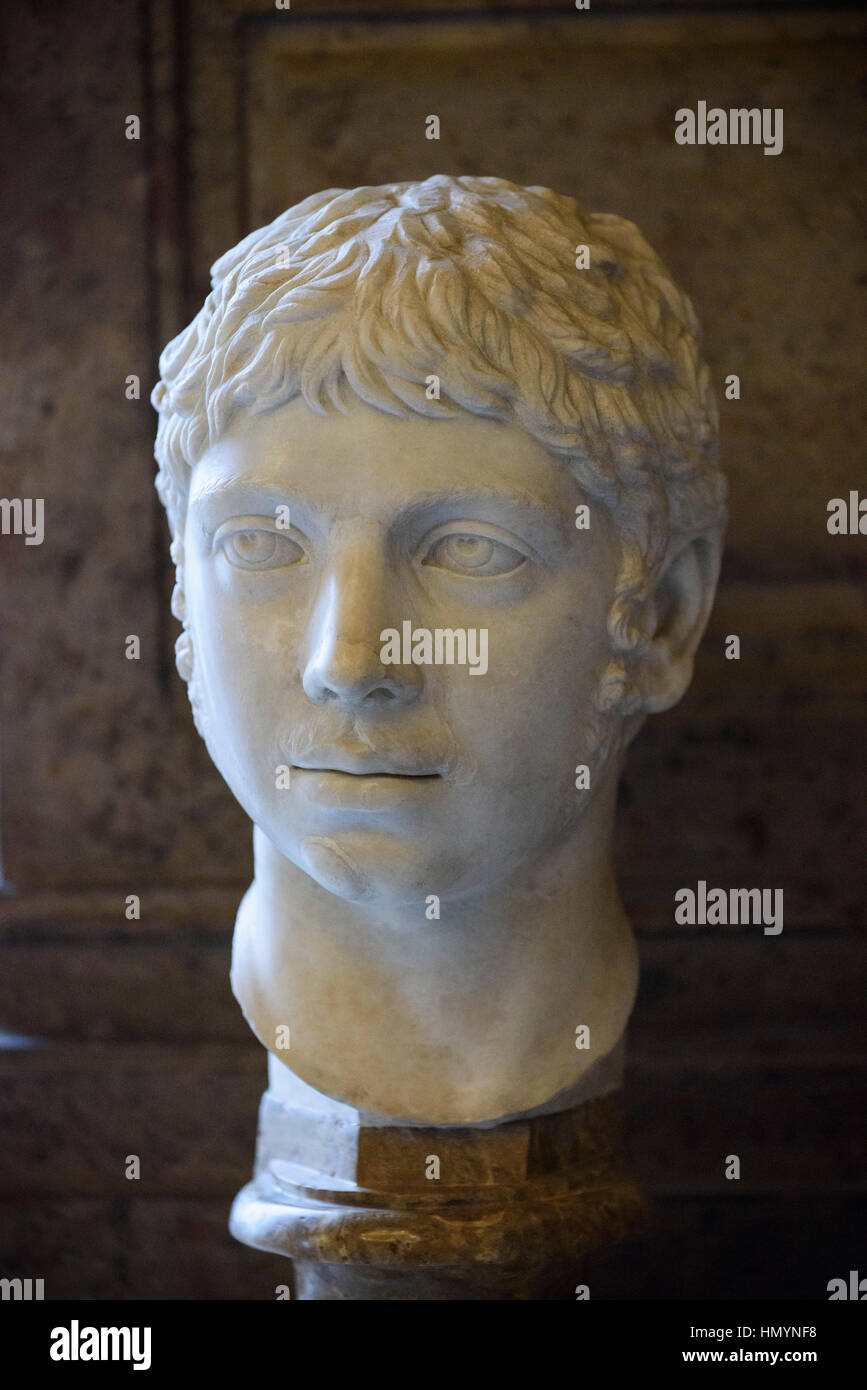 Rome. Italy. Portrait bust of Roman Emperor Elagabalus (203-222 AD), Capitoline Museum. Musei Capitolini. Stock Photohttps://www.alamy.com/image-license-details/?v=1https://www.alamy.com/stock-photo-rome-italy-portrait-bust-of-roman-emperor-elagabalus-203-222-ad-capitoline-133375292.html
Rome. Italy. Portrait bust of Roman Emperor Elagabalus (203-222 AD), Capitoline Museum. Musei Capitolini. Stock Photohttps://www.alamy.com/image-license-details/?v=1https://www.alamy.com/stock-photo-rome-italy-portrait-bust-of-roman-emperor-elagabalus-203-222-ad-capitoline-133375292.htmlRMHMYNF8–Rome. Italy. Portrait bust of Roman Emperor Elagabalus (203-222 AD), Capitoline Museum. Musei Capitolini.
 Elagabalus (Marcus Aurelius Antoninus Augustus) (203-222). Roman Emperor. Engraving in The Illustrated World, 1880. Stock Photohttps://www.alamy.com/image-license-details/?v=1https://www.alamy.com/stock-photo-elagabalus-marcus-aurelius-antoninus-augustus-203-222-roman-emperor-55069305.html
Elagabalus (Marcus Aurelius Antoninus Augustus) (203-222). Roman Emperor. Engraving in The Illustrated World, 1880. Stock Photohttps://www.alamy.com/image-license-details/?v=1https://www.alamy.com/stock-photo-elagabalus-marcus-aurelius-antoninus-augustus-203-222-roman-emperor-55069305.htmlRMD5GHCW–Elagabalus (Marcus Aurelius Antoninus Augustus) (203-222). Roman Emperor. Engraving in The Illustrated World, 1880.
 Elagabalus, c. 204 – 222, Heliogabalus or Antoninus, Roman emperor from 218 to 222, while he was still a teenager. Bust in profile with laurel wreath. In carnelian. Elagabalo. In corniola. Copperplate engraving by Giovanni Battista Galestruzzi after Leonardo Agostini from Gemmae et Sculpturae Antiquae Depicti ab Leonardo Augustino Senesi, Abraham Blooteling, Amsterdam, 1685. Stock Photohttps://www.alamy.com/image-license-details/?v=1https://www.alamy.com/elagabalus-c-204-222-heliogabalus-or-antoninus-roman-emperor-from-218-to-222-while-he-was-still-a-teenager-bust-in-profile-with-laurel-wreath-in-carnelian-elagabalo-in-corniola-copperplate-engraving-by-giovanni-battista-galestruzzi-after-leonardo-agostini-from-gemmae-et-sculpturae-antiquae-depicti-ab-leonardo-augustino-senesi-abraham-blooteling-amsterdam-1685-image475351943.html
Elagabalus, c. 204 – 222, Heliogabalus or Antoninus, Roman emperor from 218 to 222, while he was still a teenager. Bust in profile with laurel wreath. In carnelian. Elagabalo. In corniola. Copperplate engraving by Giovanni Battista Galestruzzi after Leonardo Agostini from Gemmae et Sculpturae Antiquae Depicti ab Leonardo Augustino Senesi, Abraham Blooteling, Amsterdam, 1685. Stock Photohttps://www.alamy.com/image-license-details/?v=1https://www.alamy.com/elagabalus-c-204-222-heliogabalus-or-antoninus-roman-emperor-from-218-to-222-while-he-was-still-a-teenager-bust-in-profile-with-laurel-wreath-in-carnelian-elagabalo-in-corniola-copperplate-engraving-by-giovanni-battista-galestruzzi-after-leonardo-agostini-from-gemmae-et-sculpturae-antiquae-depicti-ab-leonardo-augustino-senesi-abraham-blooteling-amsterdam-1685-image475351943.htmlRM2JHA473–Elagabalus, c. 204 – 222, Heliogabalus or Antoninus, Roman emperor from 218 to 222, while he was still a teenager. Bust in profile with laurel wreath. In carnelian. Elagabalo. In corniola. Copperplate engraving by Giovanni Battista Galestruzzi after Leonardo Agostini from Gemmae et Sculpturae Antiquae Depicti ab Leonardo Augustino Senesi, Abraham Blooteling, Amsterdam, 1685.
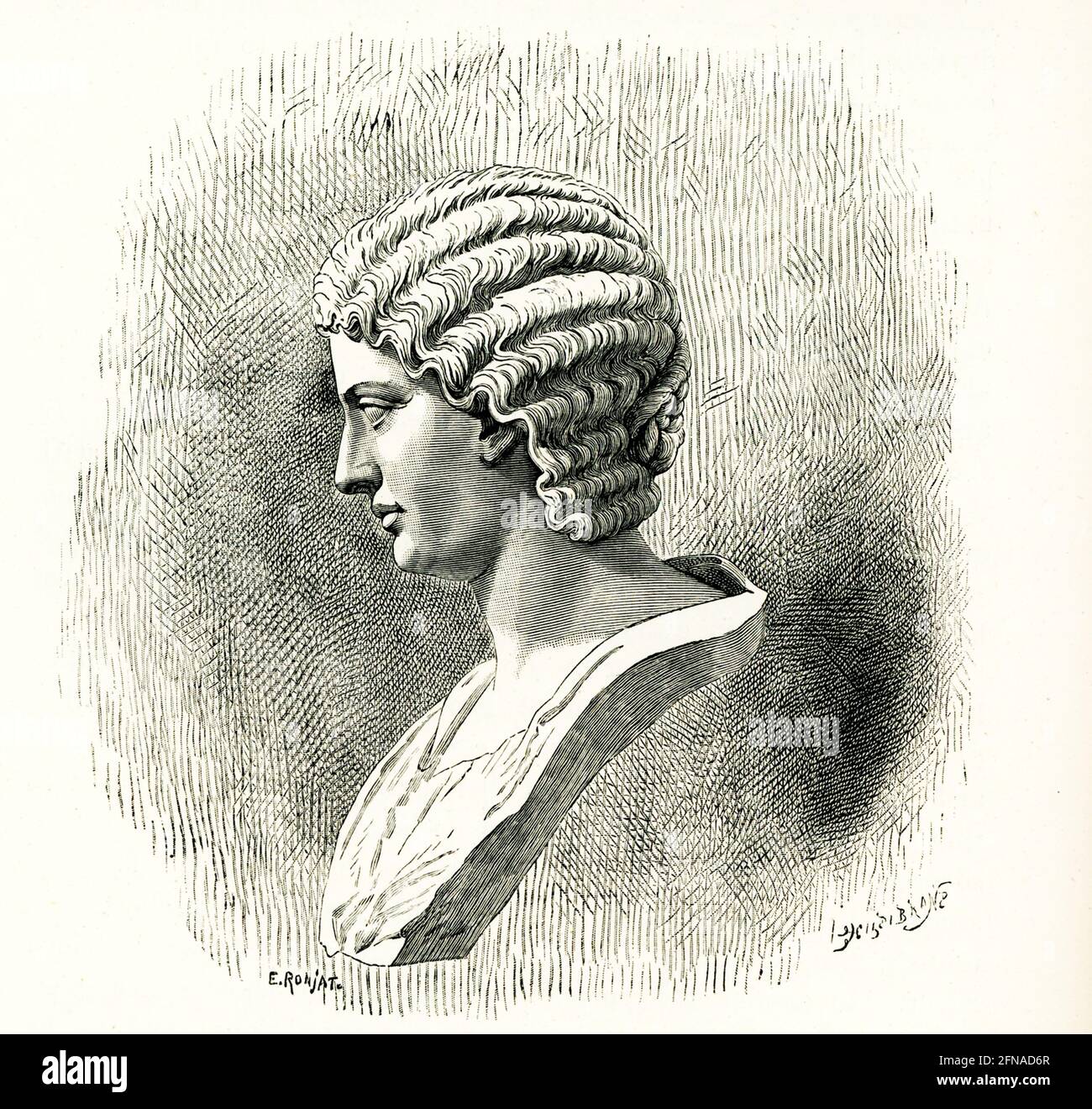 This illustration shows the bust of Empress Julia Pia Domna that was found in Rome and is housed in the Vatican Museum. Julia Domna ( c. 160 – 217 AD) was Roman empress from 193 to 211 as the wife of Emperor Septimius Severus. She was born in Emesa (present-day Homs) in Roman Syria to an Arab family of priests of the deity Elagabalus. In 187, she married Severus, who at the time was governor of the Roman province of Gallia Lugdunensis. They had two sons, Caracalla and Geta. Following the death of Severus in 211, Domna became the first empress dowager to receive the title combination 'Pia Felix Stock Photohttps://www.alamy.com/image-license-details/?v=1https://www.alamy.com/this-illustration-shows-the-bust-of-empress-julia-pia-domna-that-was-found-in-rome-and-is-housed-in-the-vatican-museum-julia-domnac160-217-ad-wasroman-empressfrom-193-to-211-as-the-wife-of-emperorseptimius-severus-she-was-born-inemesapresent-dayhoms-inroman-syriato-anarabfamily-of-priests-of-the-deityelagabalus-in-187-she-married-severus-who-at-the-time-was-governor-of-the-roman-province-ofgallia-lugdunensis-they-had-two-sonscaracallaandgeta-following-the-death-of-severus-in-211-domna-became-the-firstempress-dowager-to-receive-the-title-combination-pia-felix-image426186511.html
This illustration shows the bust of Empress Julia Pia Domna that was found in Rome and is housed in the Vatican Museum. Julia Domna ( c. 160 – 217 AD) was Roman empress from 193 to 211 as the wife of Emperor Septimius Severus. She was born in Emesa (present-day Homs) in Roman Syria to an Arab family of priests of the deity Elagabalus. In 187, she married Severus, who at the time was governor of the Roman province of Gallia Lugdunensis. They had two sons, Caracalla and Geta. Following the death of Severus in 211, Domna became the first empress dowager to receive the title combination 'Pia Felix Stock Photohttps://www.alamy.com/image-license-details/?v=1https://www.alamy.com/this-illustration-shows-the-bust-of-empress-julia-pia-domna-that-was-found-in-rome-and-is-housed-in-the-vatican-museum-julia-domnac160-217-ad-wasroman-empressfrom-193-to-211-as-the-wife-of-emperorseptimius-severus-she-was-born-inemesapresent-dayhoms-inroman-syriato-anarabfamily-of-priests-of-the-deityelagabalus-in-187-she-married-severus-who-at-the-time-was-governor-of-the-roman-province-ofgallia-lugdunensis-they-had-two-sonscaracallaandgeta-following-the-death-of-severus-in-211-domna-became-the-firstempress-dowager-to-receive-the-title-combination-pia-felix-image426186511.htmlRF2FNAD6R–This illustration shows the bust of Empress Julia Pia Domna that was found in Rome and is housed in the Vatican Museum. Julia Domna ( c. 160 – 217 AD) was Roman empress from 193 to 211 as the wife of Emperor Septimius Severus. She was born in Emesa (present-day Homs) in Roman Syria to an Arab family of priests of the deity Elagabalus. In 187, she married Severus, who at the time was governor of the Roman province of Gallia Lugdunensis. They had two sons, Caracalla and Geta. Following the death of Severus in 211, Domna became the first empress dowager to receive the title combination 'Pia Felix
 Elagabalus (ca.203-222). Roman emperor. Bust. Marble. Unknown artist. National Gallery. Oslo. Norway. Stock Photohttps://www.alamy.com/image-license-details/?v=1https://www.alamy.com/elagabalus-ca203-222-roman-emperor-bust-marble-unknown-artist-national-gallery-oslo-norway-image211348405.html
Elagabalus (ca.203-222). Roman emperor. Bust. Marble. Unknown artist. National Gallery. Oslo. Norway. Stock Photohttps://www.alamy.com/image-license-details/?v=1https://www.alamy.com/elagabalus-ca203-222-roman-emperor-bust-marble-unknown-artist-national-gallery-oslo-norway-image211348405.htmlRMP7RN19–Elagabalus (ca.203-222). Roman emperor. Bust. Marble. Unknown artist. National Gallery. Oslo. Norway.
 Severus Alexander (208-235 CE) was cousin to Emperor Elagabalus, and his heir apparent. When Elagabalus was assassinated in 222 CE, the fourteen-year-old became emperor, under the auspice of his grandmother Julia Maesa, who had arranged for Alexander's accession just as she had done with Elagabalus before him. Alexander quickly did much to correct the domestic troubles Elagabalus had caused, cleaning up the image of the imperial throne and improving the morals and dignity of the state. His reign was considered prosperous, but militarily, the Empire was faced against the rising threat of the S Stock Photohttps://www.alamy.com/image-license-details/?v=1https://www.alamy.com/severus-alexander-208-235-ce-was-cousin-to-emperor-elagabalus-and-his-heir-apparent-when-elagabalus-was-assassinated-in-222-ce-the-fourteen-year-old-became-emperor-under-the-auspice-of-his-grandmother-julia-maesa-who-had-arranged-for-alexanders-accession-just-as-she-had-done-with-elagabalus-before-him-alexander-quickly-did-much-to-correct-the-domestic-troubles-elagabalus-had-caused-cleaning-up-the-image-of-the-imperial-throne-and-improving-the-morals-and-dignity-of-the-state-his-reign-was-considered-prosperous-but-militarily-the-empire-was-faced-against-the-rising-threat-of-the-s-image344278410.html
Severus Alexander (208-235 CE) was cousin to Emperor Elagabalus, and his heir apparent. When Elagabalus was assassinated in 222 CE, the fourteen-year-old became emperor, under the auspice of his grandmother Julia Maesa, who had arranged for Alexander's accession just as she had done with Elagabalus before him. Alexander quickly did much to correct the domestic troubles Elagabalus had caused, cleaning up the image of the imperial throne and improving the morals and dignity of the state. His reign was considered prosperous, but militarily, the Empire was faced against the rising threat of the S Stock Photohttps://www.alamy.com/image-license-details/?v=1https://www.alamy.com/severus-alexander-208-235-ce-was-cousin-to-emperor-elagabalus-and-his-heir-apparent-when-elagabalus-was-assassinated-in-222-ce-the-fourteen-year-old-became-emperor-under-the-auspice-of-his-grandmother-julia-maesa-who-had-arranged-for-alexanders-accession-just-as-she-had-done-with-elagabalus-before-him-alexander-quickly-did-much-to-correct-the-domestic-troubles-elagabalus-had-caused-cleaning-up-the-image-of-the-imperial-throne-and-improving-the-morals-and-dignity-of-the-state-his-reign-was-considered-prosperous-but-militarily-the-empire-was-faced-against-the-rising-threat-of-the-s-image344278410.htmlRM2B036HE–Severus Alexander (208-235 CE) was cousin to Emperor Elagabalus, and his heir apparent. When Elagabalus was assassinated in 222 CE, the fourteen-year-old became emperor, under the auspice of his grandmother Julia Maesa, who had arranged for Alexander's accession just as she had done with Elagabalus before him. Alexander quickly did much to correct the domestic troubles Elagabalus had caused, cleaning up the image of the imperial throne and improving the morals and dignity of the state. His reign was considered prosperous, but militarily, the Empire was faced against the rising threat of the S
 Ancient Roman. Denarius (Coin) Portraying Emperor Elagabalus. 218 AD–222 AD. Rome. Silver Obverse Elagabalus bust laureate, rightReverse Rome seated left holding victory and sceptre, shield behind Stock Photohttps://www.alamy.com/image-license-details/?v=1https://www.alamy.com/ancient-roman-denarius-coin-portraying-emperor-elagabalus-218-ad222-ad-rome-silver-obverse-elagabalus-bust-laureate-rightreverse-rome-seated-left-holding-victory-and-sceptre-shield-behind-image337978682.html
Ancient Roman. Denarius (Coin) Portraying Emperor Elagabalus. 218 AD–222 AD. Rome. Silver Obverse Elagabalus bust laureate, rightReverse Rome seated left holding victory and sceptre, shield behind Stock Photohttps://www.alamy.com/image-license-details/?v=1https://www.alamy.com/ancient-roman-denarius-coin-portraying-emperor-elagabalus-218-ad222-ad-rome-silver-obverse-elagabalus-bust-laureate-rightreverse-rome-seated-left-holding-victory-and-sceptre-shield-behind-image337978682.htmlRM2AHT776–Ancient Roman. Denarius (Coin) Portraying Emperor Elagabalus. 218 AD–222 AD. Rome. Silver Obverse Elagabalus bust laureate, rightReverse Rome seated left holding victory and sceptre, shield behind
 Heliogabalus, Roman Emperor of the 3rd century. Artist: Unknown Stock Photohttps://www.alamy.com/image-license-details/?v=1https://www.alamy.com/heliogabalus-roman-emperor-of-the-3rd-century-artist-unknown-image8372895.html
Heliogabalus, Roman Emperor of the 3rd century. Artist: Unknown Stock Photohttps://www.alamy.com/image-license-details/?v=1https://www.alamy.com/heliogabalus-roman-emperor-of-the-3rd-century-artist-unknown-image8372895.htmlRMAJ83P0–Heliogabalus, Roman Emperor of the 3rd century. Artist: Unknown
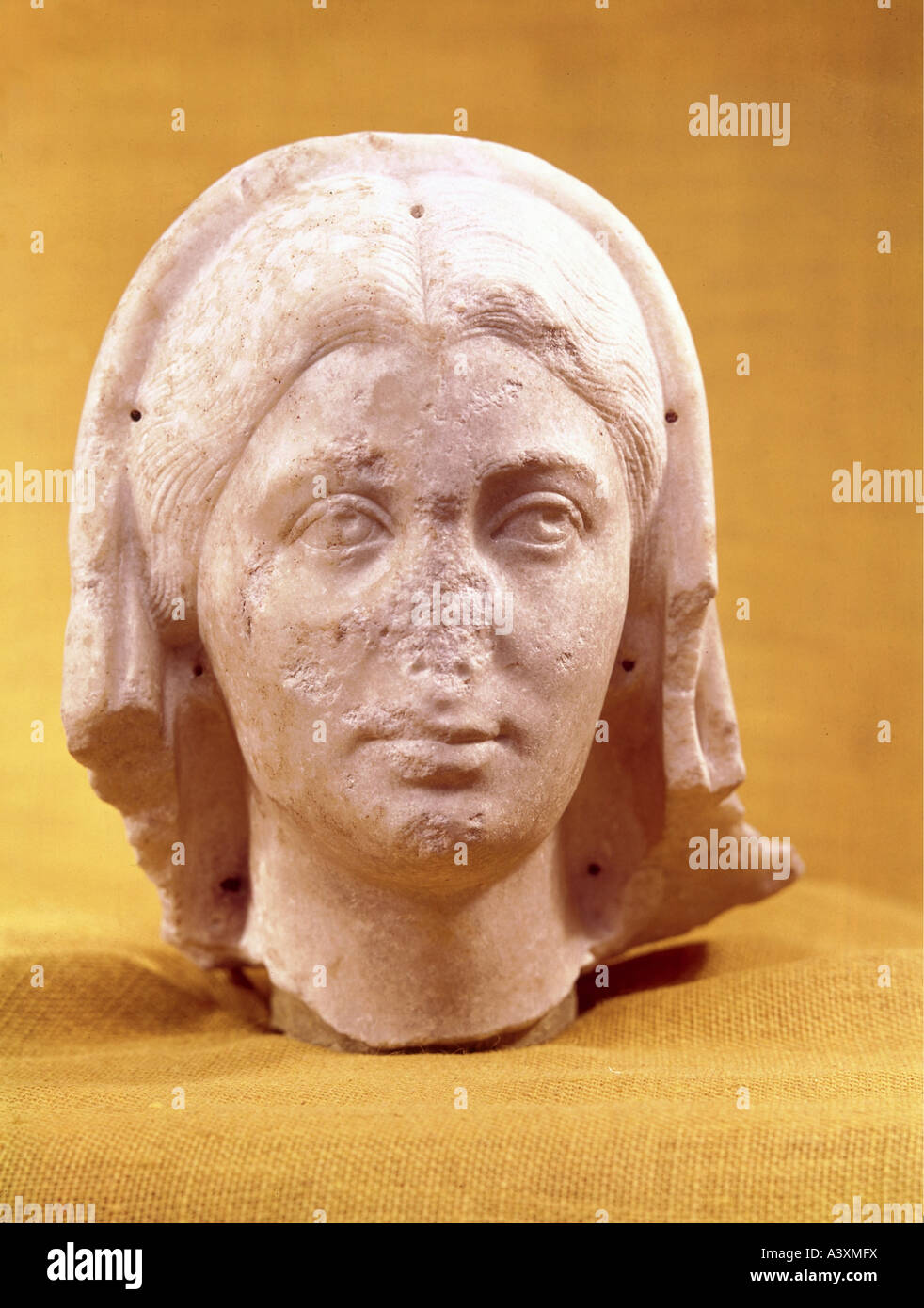 Julia Soaemias Bassiana, circa 180 - 11.3.222 BC, Roman Empress 218 - 222, portrait, bust, marble, 3rd century BC, Rheinisches L Stock Photohttps://www.alamy.com/image-license-details/?v=1https://www.alamy.com/stock-photo-julia-soaemias-bassiana-circa-180-113222-bc-roman-empress-218-222-10876285.html
Julia Soaemias Bassiana, circa 180 - 11.3.222 BC, Roman Empress 218 - 222, portrait, bust, marble, 3rd century BC, Rheinisches L Stock Photohttps://www.alamy.com/image-license-details/?v=1https://www.alamy.com/stock-photo-julia-soaemias-bassiana-circa-180-113222-bc-roman-empress-218-222-10876285.htmlRMA3XMFX–Julia Soaemias Bassiana, circa 180 - 11.3.222 BC, Roman Empress 218 - 222, portrait, bust, marble, 3rd century BC, Rheinisches L
 Portrait bust of a youth. Pentelic marble. Found at Eleusis. Time of the emperor Elagabalus (A.D. 218 222). Inv. No. 2350. Athens, National Archaeological Museum. Stock Photohttps://www.alamy.com/image-license-details/?v=1https://www.alamy.com/portrait-bust-of-a-youth-pentelic-marble-found-at-eleusis-time-of-the-emperor-elagabalus-ad-218-222-inv-no-2350-athens-national-archaeological-museum-image634299025.html
Portrait bust of a youth. Pentelic marble. Found at Eleusis. Time of the emperor Elagabalus (A.D. 218 222). Inv. No. 2350. Athens, National Archaeological Museum. Stock Photohttps://www.alamy.com/image-license-details/?v=1https://www.alamy.com/portrait-bust-of-a-youth-pentelic-marble-found-at-eleusis-time-of-the-emperor-elagabalus-ad-218-222-inv-no-2350-athens-national-archaeological-museum-image634299025.htmlRM2YRXPTH–Portrait bust of a youth. Pentelic marble. Found at Eleusis. Time of the emperor Elagabalus (A.D. 218 222). Inv. No. 2350. Athens, National Archaeological Museum.
 Rome. Italy. Portrait bust of Roman Emperor Elagabalus (203-222 AD), Capitoline Museum. Musei Capitolini. Stock Photohttps://www.alamy.com/image-license-details/?v=1https://www.alamy.com/stock-photo-rome-italy-portrait-bust-of-roman-emperor-elagabalus-203-222-ad-capitoline-133392380.html
Rome. Italy. Portrait bust of Roman Emperor Elagabalus (203-222 AD), Capitoline Museum. Musei Capitolini. Stock Photohttps://www.alamy.com/image-license-details/?v=1https://www.alamy.com/stock-photo-rome-italy-portrait-bust-of-roman-emperor-elagabalus-203-222-ad-capitoline-133392380.htmlRMHN0F9G–Rome. Italy. Portrait bust of Roman Emperor Elagabalus (203-222 AD), Capitoline Museum. Musei Capitolini.
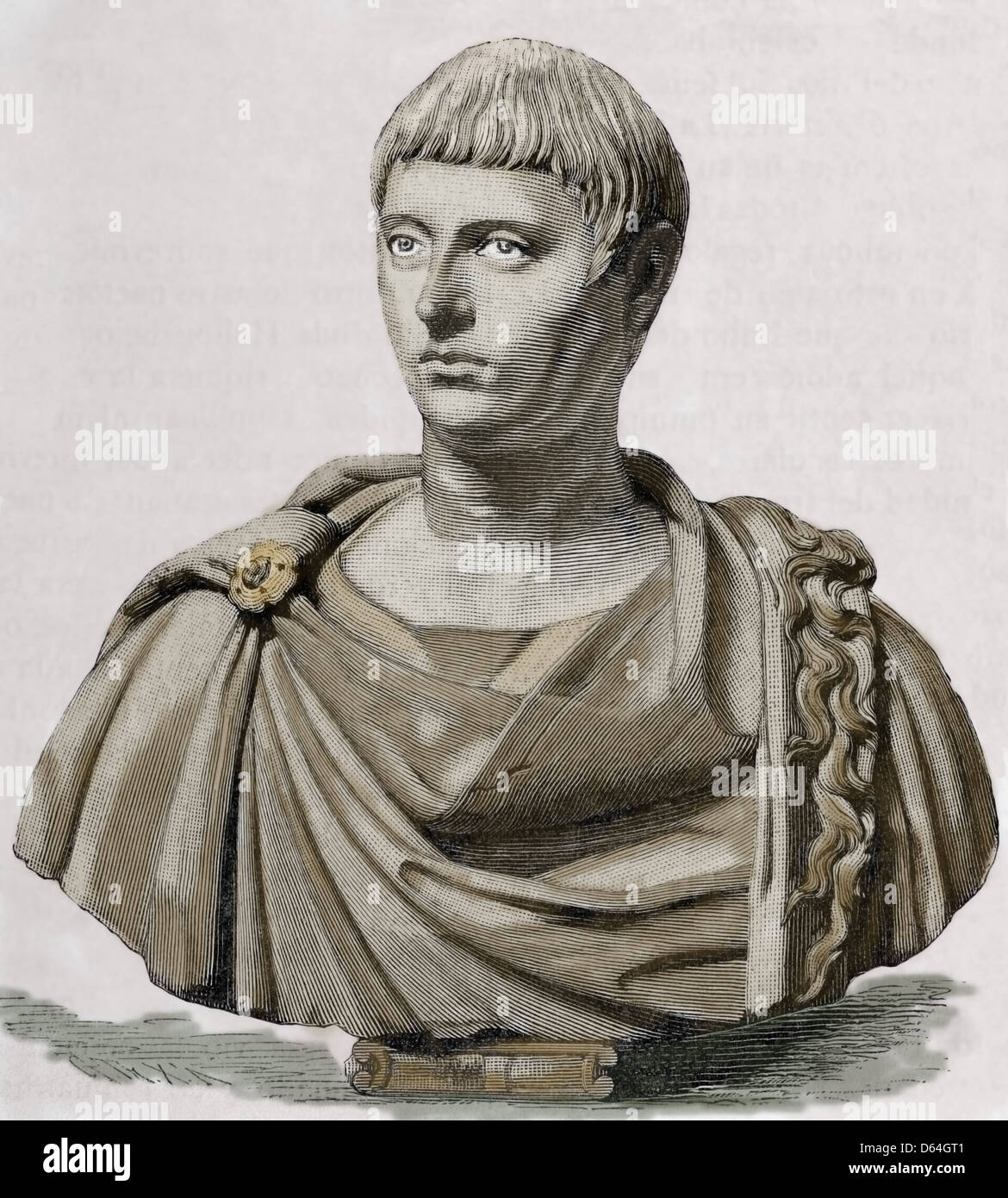 Elagabalus (Marcus Aurelius Antoninus Augustus) (203-222). Roman Emperor. Engraving in The Illustrated World, 1880. Colored. Stock Photohttps://www.alamy.com/image-license-details/?v=1https://www.alamy.com/stock-photo-elagabalus-marcus-aurelius-antoninus-augustus-203-222-roman-emperor-55420065.html
Elagabalus (Marcus Aurelius Antoninus Augustus) (203-222). Roman Emperor. Engraving in The Illustrated World, 1880. Colored. Stock Photohttps://www.alamy.com/image-license-details/?v=1https://www.alamy.com/stock-photo-elagabalus-marcus-aurelius-antoninus-augustus-203-222-roman-emperor-55420065.htmlRMD64GT1–Elagabalus (Marcus Aurelius Antoninus Augustus) (203-222). Roman Emperor. Engraving in The Illustrated World, 1880. Colored.
 Elagabalus, c. 204 222, Heliogabalus or Antoninus, Roman emperor from 218 to 222, while he was still a teenager. Bust in profile with laurel wreath. In carnelian. Elagabalo. In corniola. Copperplate engraving by Giovanni Battista Galestruzzi after Leonardo Agostini from Gemmae et Sculpturae Antiquae Depicti ab Leonardo Augustino Senesi, Abraham Blooteling, Amsterdam, 1685. Stock Photohttps://www.alamy.com/image-license-details/?v=1https://www.alamy.com/elagabalus-c-204-222-heliogabalus-or-antoninus-roman-emperor-from-218-to-222-while-he-was-still-a-teenager-bust-in-profile-with-laurel-wreath-in-carnelian-elagabalo-in-corniola-copperplate-engraving-by-giovanni-battista-galestruzzi-after-leonardo-agostini-from-gemmae-et-sculpturae-antiquae-depicti-ab-leonardo-augustino-senesi-abraham-blooteling-amsterdam-1685-image571834062.html
Elagabalus, c. 204 222, Heliogabalus or Antoninus, Roman emperor from 218 to 222, while he was still a teenager. Bust in profile with laurel wreath. In carnelian. Elagabalo. In corniola. Copperplate engraving by Giovanni Battista Galestruzzi after Leonardo Agostini from Gemmae et Sculpturae Antiquae Depicti ab Leonardo Augustino Senesi, Abraham Blooteling, Amsterdam, 1685. Stock Photohttps://www.alamy.com/image-license-details/?v=1https://www.alamy.com/elagabalus-c-204-222-heliogabalus-or-antoninus-roman-emperor-from-218-to-222-while-he-was-still-a-teenager-bust-in-profile-with-laurel-wreath-in-carnelian-elagabalo-in-corniola-copperplate-engraving-by-giovanni-battista-galestruzzi-after-leonardo-agostini-from-gemmae-et-sculpturae-antiquae-depicti-ab-leonardo-augustino-senesi-abraham-blooteling-amsterdam-1685-image571834062.htmlRM2T69852–Elagabalus, c. 204 222, Heliogabalus or Antoninus, Roman emperor from 218 to 222, while he was still a teenager. Bust in profile with laurel wreath. In carnelian. Elagabalo. In corniola. Copperplate engraving by Giovanni Battista Galestruzzi after Leonardo Agostini from Gemmae et Sculpturae Antiquae Depicti ab Leonardo Augustino Senesi, Abraham Blooteling, Amsterdam, 1685.
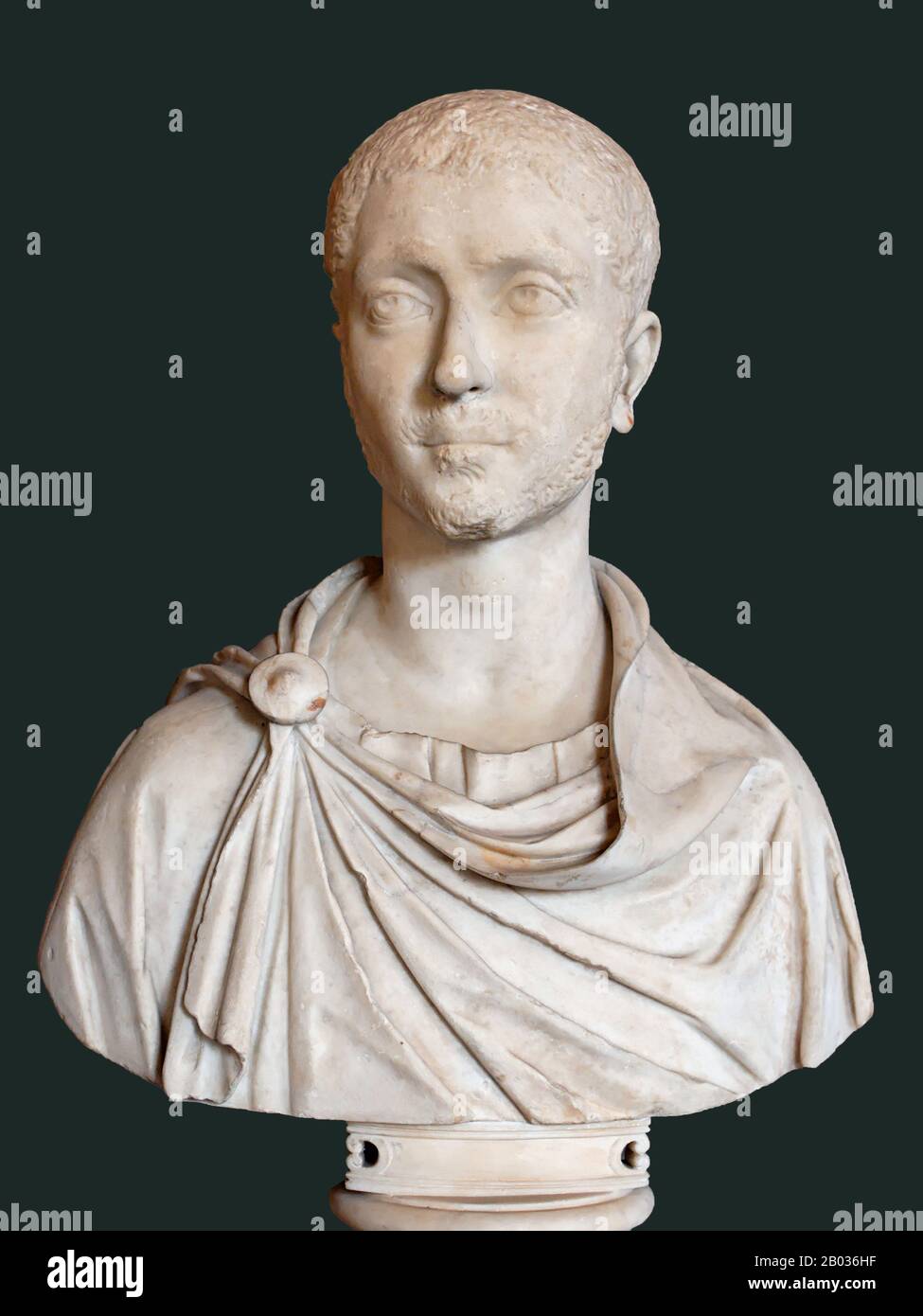 Severus Alexander (208-235 CE) was cousin to Emperor Elagabalus, and his heir apparent. When Elagabalus was assassinated in 222 CE, the fourteen-year-old became emperor, under the auspice of his grandmother Julia Maesa, who had arranged for Alexander's accession just as she had done with Elagabalus before him. Alexander quickly did much to correct the domestic troubles Elagabalus had caused, cleaning up the image of the imperial throne and improving the morals and dignity of the state. His reign was considered prosperous, but militarily, the Empire was faced against the rising threat of the S Stock Photohttps://www.alamy.com/image-license-details/?v=1https://www.alamy.com/severus-alexander-208-235-ce-was-cousin-to-emperor-elagabalus-and-his-heir-apparent-when-elagabalus-was-assassinated-in-222-ce-the-fourteen-year-old-became-emperor-under-the-auspice-of-his-grandmother-julia-maesa-who-had-arranged-for-alexanders-accession-just-as-she-had-done-with-elagabalus-before-him-alexander-quickly-did-much-to-correct-the-domestic-troubles-elagabalus-had-caused-cleaning-up-the-image-of-the-imperial-throne-and-improving-the-morals-and-dignity-of-the-state-his-reign-was-considered-prosperous-but-militarily-the-empire-was-faced-against-the-rising-threat-of-the-s-image344278411.html
Severus Alexander (208-235 CE) was cousin to Emperor Elagabalus, and his heir apparent. When Elagabalus was assassinated in 222 CE, the fourteen-year-old became emperor, under the auspice of his grandmother Julia Maesa, who had arranged for Alexander's accession just as she had done with Elagabalus before him. Alexander quickly did much to correct the domestic troubles Elagabalus had caused, cleaning up the image of the imperial throne and improving the morals and dignity of the state. His reign was considered prosperous, but militarily, the Empire was faced against the rising threat of the S Stock Photohttps://www.alamy.com/image-license-details/?v=1https://www.alamy.com/severus-alexander-208-235-ce-was-cousin-to-emperor-elagabalus-and-his-heir-apparent-when-elagabalus-was-assassinated-in-222-ce-the-fourteen-year-old-became-emperor-under-the-auspice-of-his-grandmother-julia-maesa-who-had-arranged-for-alexanders-accession-just-as-she-had-done-with-elagabalus-before-him-alexander-quickly-did-much-to-correct-the-domestic-troubles-elagabalus-had-caused-cleaning-up-the-image-of-the-imperial-throne-and-improving-the-morals-and-dignity-of-the-state-his-reign-was-considered-prosperous-but-militarily-the-empire-was-faced-against-the-rising-threat-of-the-s-image344278411.htmlRM2B036HF–Severus Alexander (208-235 CE) was cousin to Emperor Elagabalus, and his heir apparent. When Elagabalus was assassinated in 222 CE, the fourteen-year-old became emperor, under the auspice of his grandmother Julia Maesa, who had arranged for Alexander's accession just as she had done with Elagabalus before him. Alexander quickly did much to correct the domestic troubles Elagabalus had caused, cleaning up the image of the imperial throne and improving the morals and dignity of the state. His reign was considered prosperous, but militarily, the Empire was faced against the rising threat of the S
 Rome. Italy. Portrait bust of Roman Emperor Elagabalus (203-222 AD), Capitoline Museum. Musei Capitolini. Stock Photohttps://www.alamy.com/image-license-details/?v=1https://www.alamy.com/stock-photo-rome-italy-portrait-bust-of-roman-emperor-elagabalus-203-222-ad-capitoline-133392427.html
Rome. Italy. Portrait bust of Roman Emperor Elagabalus (203-222 AD), Capitoline Museum. Musei Capitolini. Stock Photohttps://www.alamy.com/image-license-details/?v=1https://www.alamy.com/stock-photo-rome-italy-portrait-bust-of-roman-emperor-elagabalus-203-222-ad-capitoline-133392427.htmlRMHN0FB7–Rome. Italy. Portrait bust of Roman Emperor Elagabalus (203-222 AD), Capitoline Museum. Musei Capitolini.
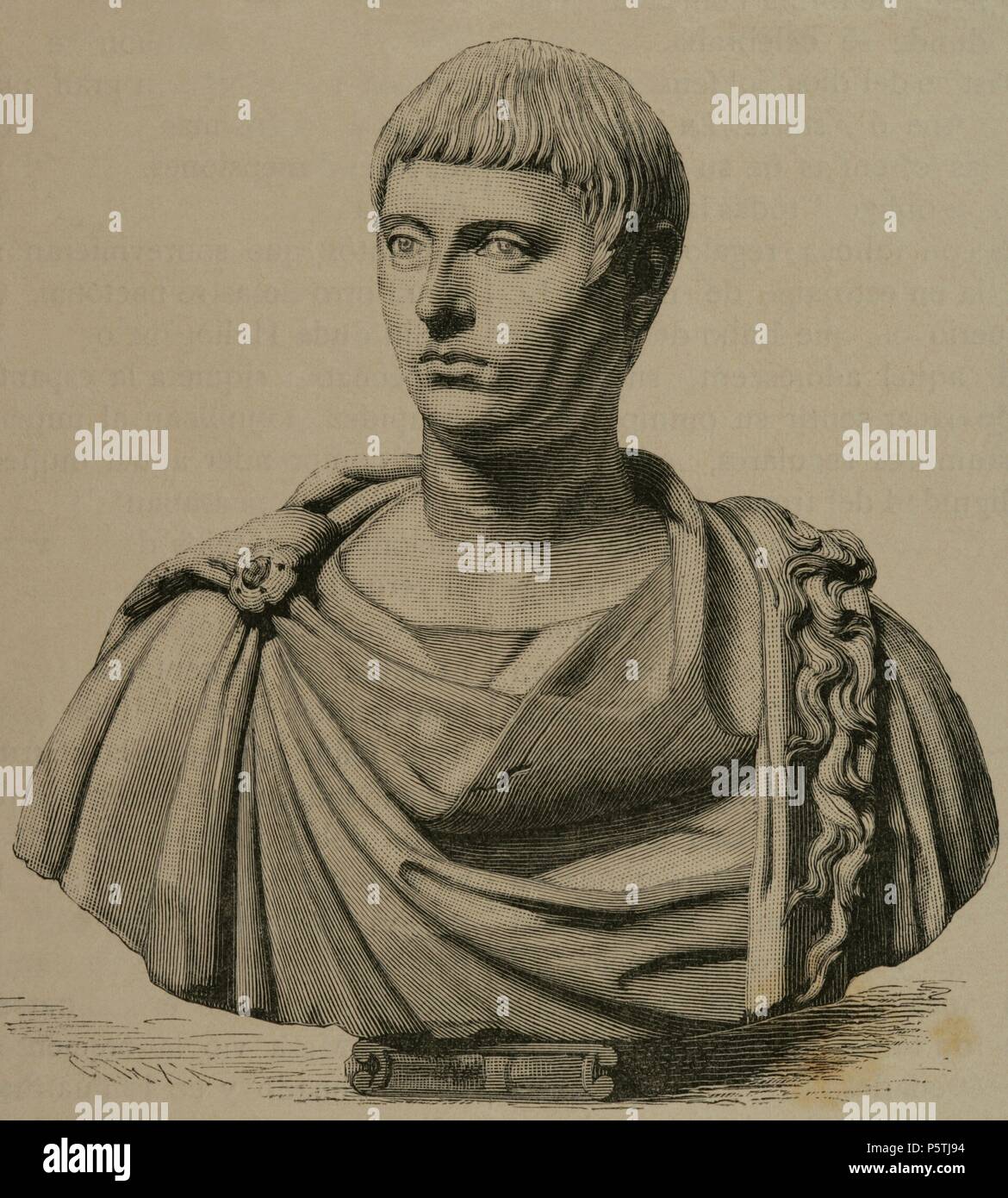 Elagabalus (Marcus Aurelius Antoninus Augustus) (203-222). Roman Emperor. Engraving in The Illustrated World, 1880. Stock Photohttps://www.alamy.com/image-license-details/?v=1https://www.alamy.com/elagabalus-marcus-aurelius-antoninus-augustus-203-222-roman-emperor-engraving-in-the-illustrated-world-1880-image210138912.html
Elagabalus (Marcus Aurelius Antoninus Augustus) (203-222). Roman Emperor. Engraving in The Illustrated World, 1880. Stock Photohttps://www.alamy.com/image-license-details/?v=1https://www.alamy.com/elagabalus-marcus-aurelius-antoninus-augustus-203-222-roman-emperor-engraving-in-the-illustrated-world-1880-image210138912.htmlRMP5TJ94–Elagabalus (Marcus Aurelius Antoninus Augustus) (203-222). Roman Emperor. Engraving in The Illustrated World, 1880.
 Severus Alexander (208-235 CE) was cousin to Emperor Elagabalus, and his heir apparent. When Elagabalus was assassinated in 222 CE, the fourteen-year-old became emperor, under the auspice of his grandmother Julia Maesa, who had arranged for Alexander's accession just as she had done with Elagabalus before him. Alexander quickly did much to correct the domestic troubles Elagabalus had caused, cleaning up the image of the imperial throne and improving the morals and dignity of the state. His reign was considered prosperous, but militarily, the Empire was faced against the rising threat of the S Stock Photohttps://www.alamy.com/image-license-details/?v=1https://www.alamy.com/severus-alexander-208-235-ce-was-cousin-to-emperor-elagabalus-and-his-heir-apparent-when-elagabalus-was-assassinated-in-222-ce-the-fourteen-year-old-became-emperor-under-the-auspice-of-his-grandmother-julia-maesa-who-had-arranged-for-alexanders-accession-just-as-she-had-done-with-elagabalus-before-him-alexander-quickly-did-much-to-correct-the-domestic-troubles-elagabalus-had-caused-cleaning-up-the-image-of-the-imperial-throne-and-improving-the-morals-and-dignity-of-the-state-his-reign-was-considered-prosperous-but-militarily-the-empire-was-faced-against-the-rising-threat-of-the-s-image344278501.html
Severus Alexander (208-235 CE) was cousin to Emperor Elagabalus, and his heir apparent. When Elagabalus was assassinated in 222 CE, the fourteen-year-old became emperor, under the auspice of his grandmother Julia Maesa, who had arranged for Alexander's accession just as she had done with Elagabalus before him. Alexander quickly did much to correct the domestic troubles Elagabalus had caused, cleaning up the image of the imperial throne and improving the morals and dignity of the state. His reign was considered prosperous, but militarily, the Empire was faced against the rising threat of the S Stock Photohttps://www.alamy.com/image-license-details/?v=1https://www.alamy.com/severus-alexander-208-235-ce-was-cousin-to-emperor-elagabalus-and-his-heir-apparent-when-elagabalus-was-assassinated-in-222-ce-the-fourteen-year-old-became-emperor-under-the-auspice-of-his-grandmother-julia-maesa-who-had-arranged-for-alexanders-accession-just-as-she-had-done-with-elagabalus-before-him-alexander-quickly-did-much-to-correct-the-domestic-troubles-elagabalus-had-caused-cleaning-up-the-image-of-the-imperial-throne-and-improving-the-morals-and-dignity-of-the-state-his-reign-was-considered-prosperous-but-militarily-the-empire-was-faced-against-the-rising-threat-of-the-s-image344278501.htmlRM2B036MN–Severus Alexander (208-235 CE) was cousin to Emperor Elagabalus, and his heir apparent. When Elagabalus was assassinated in 222 CE, the fourteen-year-old became emperor, under the auspice of his grandmother Julia Maesa, who had arranged for Alexander's accession just as she had done with Elagabalus before him. Alexander quickly did much to correct the domestic troubles Elagabalus had caused, cleaning up the image of the imperial throne and improving the morals and dignity of the state. His reign was considered prosperous, but militarily, the Empire was faced against the rising threat of the S
 Elagabalus (Marcus Aurelius Antoninus Augustus) (203-222). Roman Emperor. Engraving in The Illustrated World, 1880. Colored. Stock Photohttps://www.alamy.com/image-license-details/?v=1https://www.alamy.com/elagabalus-marcus-aurelius-antoninus-augustus-203-222-roman-emperor-engraving-in-the-illustrated-world-1880-colored-image210141115.html
Elagabalus (Marcus Aurelius Antoninus Augustus) (203-222). Roman Emperor. Engraving in The Illustrated World, 1880. Colored. Stock Photohttps://www.alamy.com/image-license-details/?v=1https://www.alamy.com/elagabalus-marcus-aurelius-antoninus-augustus-203-222-roman-emperor-engraving-in-the-illustrated-world-1880-colored-image210141115.htmlRMP5TN3R–Elagabalus (Marcus Aurelius Antoninus Augustus) (203-222). Roman Emperor. Engraving in The Illustrated World, 1880. Colored.